The Euonymus, which has many common names inclusing Spindles tree, Burning Bush etc, is a great plant for adding colour to your garden. It can be used as a hedge, specimen plant,or amongst other plants to accentuate their green foliage and provide an interesting contrast to distract the eye. There are dwarf varieties of Euonymus, but the regular height is around 1 to 2 metres. They can be grown in semi-shaded areas, but better foliage colour and more compact growth are achieved if it is grown in a sunny spot. The Euonymus plant pictured is a Golden Euonymus with Variegated ( two colour) Green and Gold leaves, which i photographed in my local area.
Your Comments are always wonderful, but some are so long it's a bit overwhelming to read through all of them. So i would ask if you LIMIT COMMENTS TO AROUND 200 WORDS and no more than 5 PICTURES. Comments that conform to the above guidelines will have more chance to win the awards. Be creative ,choose good pics, and don't forget to disclose the SOURCE. xxxxx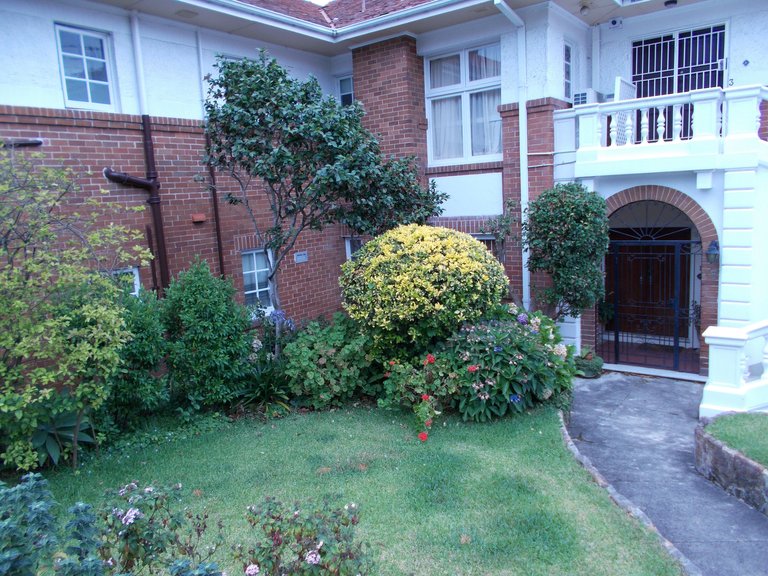
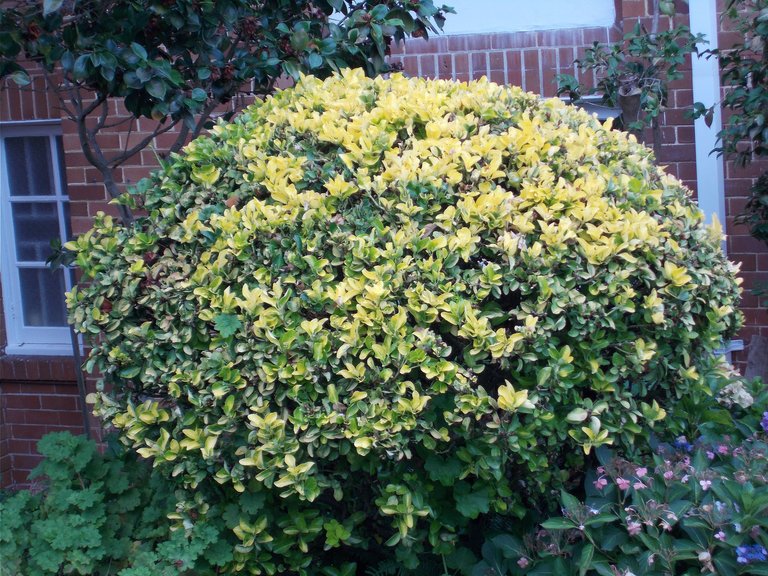
There is no alternative to the tree to maintain the balance of the environment. tree is our real friend. There aee many species plant that increase the beauty of the environment. Euonymus is really good plant.@ctrl-alt-nwo
Golden Euonymous Information;
Golden euonymous information tells you that this is a very dense shrub with an oval shape if grown in full sun. The thick foliage makes it ideal for a privacy or even a sound hedge. The shrubs are really striking in the garden. The eyonymous leaves are leathery to the touch and grow up to three inches long. The boldly variegated foliage is the star here. Most leaves are emerald green splashed liberally with buttercup yellow. But, occasionally, you’ll get branches where all of the leaves are solid yellow. Don’t expect showy flowers. The greenish-white blossoms appear in spring but you may not even notice them. They are inconspicuous. Golden euonymous shrubs can grow to 10 feet high and 6 feet wide. One alone can make a stunning statement in your garden. However, the dense foliage of these evergreen plants adapts readily to pruning and even shearing, so they are often used as hedges. How to Grow Golden Euonymous Shrubs If you are wondering how to grow golden euonymous shrubs, it isn’t very difficult. You’ll need to plant them in a sunny spot, provide weekly irrigation and fertilize them annually. Consider growing golden euonymous shrubs if you live in U.S. Department of Agriculture plant hardiness zones 6-9. When you start growing golden euonymous shrubs, you’ll do best to select a site with moist, fertile, well-drained soil. However, don’t worry too much about your soil type as long as it drains well. The bushes are tolerant and will accept almost any kind of soil. Caring for Golden Euonymous Shrubs Euonymous shrubs are not high maintenance. However, caring for golden euonymous shrubs requires more effort the year they are planted. They will require regular water – up to twice a week – until the root system has established. After that, a weekly watering is usually sufficient. Provide a balanced fertilizer in early spring. Use a slightly lower dose than recommended on the label to avoid burning the roots. If necessary, repeat in mid-autumn. Golden euonymous care includes an annual pruning if planted in a hedge.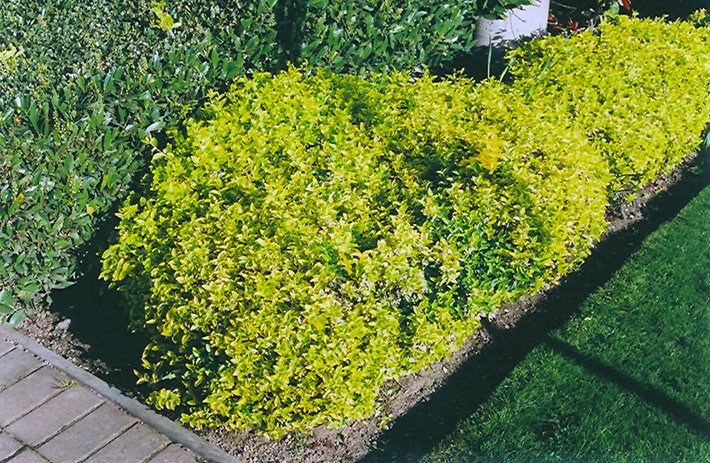
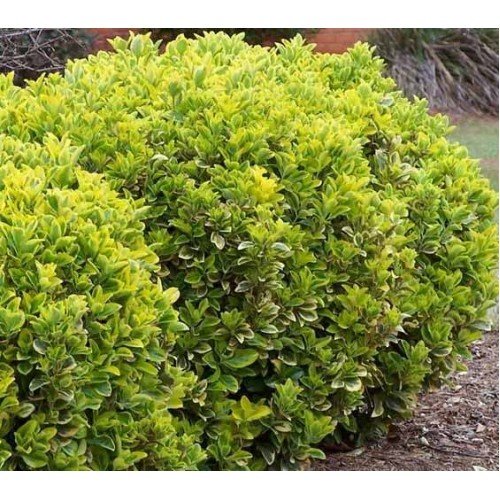

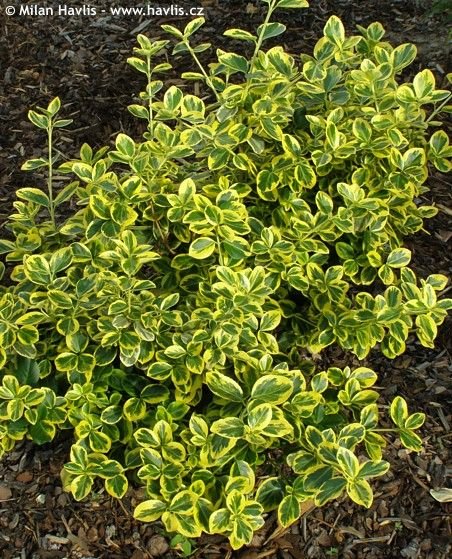
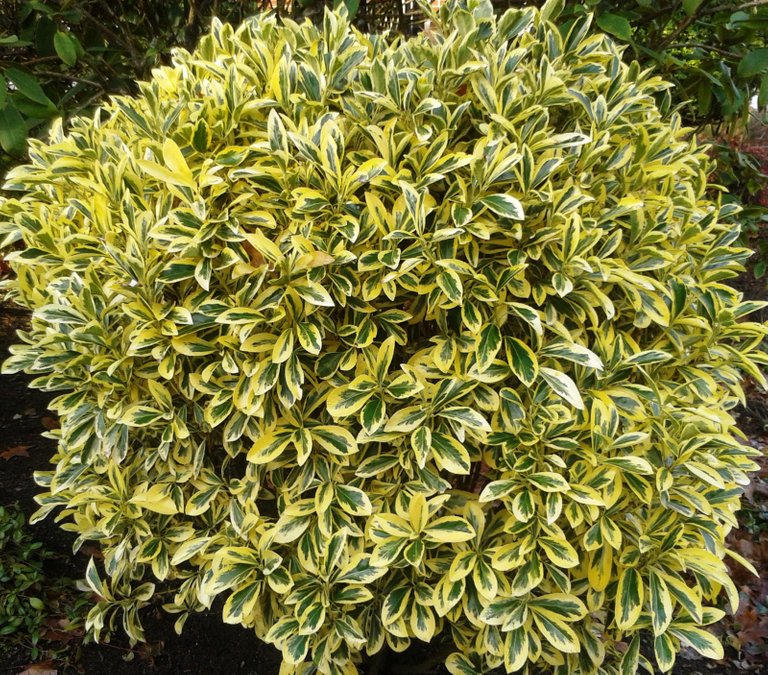
@sourceall
Congrats, you won the Silly Sausage award. Well done ! Good info and nice pics. I was very interested to read your stories about life in Bangladesh. I wish you success.
Thank you @ctrl-alt-nwo for reading my post.pray for me.
The genus “Euonymus” includes 175 different euonymus plants, from dwarf shrubs to tall trees and vines. They are known as “spindle trees,” but each species also has its own common name. If you are selecting Euonymus plant varieties for your landscape, read on. You’ll find descriptions of different Euonymus shrubs that you might want to invite into your garden.
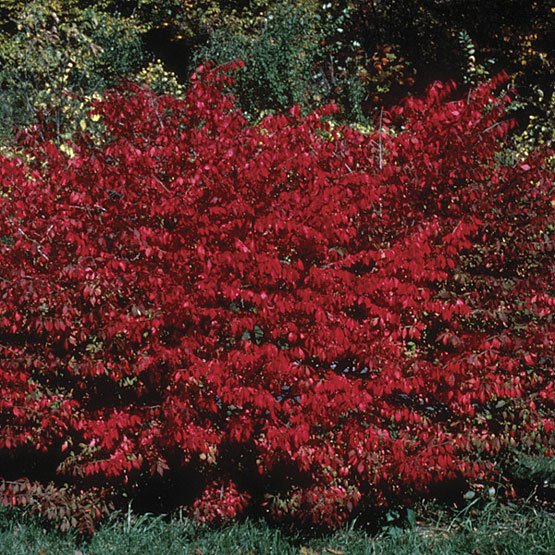
If you are looking for bushes, trees or climbers, euonymus has them all. Gardeners choose euonymus plant varieties for their attractive foliage and stunning autumn color. Some also offer unique fruits and seed pods. Many euonymus shrubs come from Asia. You’ll find that they are available in a wide range of colors and sizes, and include both evergreen and deciduous types of euonymus. That gives you a good selection of different euonymus plants to choose from when you are looking for border plants, hedges, screens, ground cover or specimen plants.
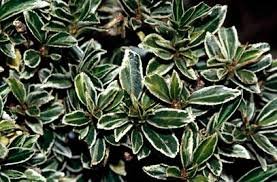.jpeg)
Smart work again sir...I'm always try maintain my home gardern....Mu best of hobby is garderning...
Thanks for sharing this flower post...
Upvoted and resteemed..
Good luck...
GOLDEN EUONYMUS (aureum euonymus)
Golden Euonymus is an xcellent choice for a colorful hedge, this evergreen shrub displays dense, bold green and gold variegated foliage on an upright growth habit. This tough shrub is adaptable to adverse conditions and tolerates poor, lean soils. Versatile and easy to care for, it requires minimal attention once established, but takes well to regular pruning.
Source
The Golden Euonymus gives a stunning effect when massed or planted in a row. It can be used as a specimen or foundation plant and creates s nice border or hedge (if clipped regularly). A single Golden Euonymus makes a big, bold statement and is best suited for larger gardens.
Source
Source
It is a very reliable focal point in larger evergreen landscapes. Golden Euonymus is an ideal hedge, as it can be sheared to maintain a height or left to grow into a natural form that is dense enough to make a good visual and sound barrier.
Source
PLANTING Golden Euonymus:
I suggest when planting your newly purchased Golden Euonymus plants that you dig a hole twice as wide as the root system but not deeper. Depending on the quality of your existing soil you may need to add a locally sourced compost or topsoil to the back-fill soil. I do not recommend using straight topsoil or compost as a back-fill soil because more times than not these products will retain entirely to much moisture and will cause the root system to rot. Adding compost or topsoil will help the young feeder roots of Golden Euonymus to spread through the loose, nutrient rich soil, much easier than if you used solely the existing soil which more times than not will be hard and compacted.
I wish you a good luck planting this beautiful plant Golden Euonymus!
(Text is from research of multiple sources)
I am trying to find something for you.This is a very good looking tree,it shows your great taste.

Introduction:Euonymus /juːˈɒnɪməs/ is a genus of flowering plants in the staff vine family, Celastraceae. Common names vary widely among different species and between different English-speaking countries, but include spindle (or spindle tree), burning-bush, strawberry-bush, wahoo, wintercreeper, or simply euonymus. It comprises about 130 species[2][3] of deciduous and evergreen shrubs, small trees and lianas. They are mostly native to East Asia, extending to the Himalayas,[4] and they are also distributed in Europe, Australasia, North America, and Madagascar. 50 species are endemic to China.
Description:The inconspicuous flowers occur in small groups, and can be green, yellow, pink or maroon in color depending on species.[4] The leaves are opposite (rarely alternate) and simple ovoid, typically 2–15 cm long, and usually with a finely serrated margin. The fruit is a pink or white four- or five-valved pod-like berry, which splits open to reveal the fleshy-coated orange or red seeds.
The seeds are eaten by frugivorous birds, which digest the fleshy seed coat and disperse the seeds in their droppings. Many species are used for medicinal use, and parts of the plants can be poisonous to humans.
Cultivation and uses:The wood of some species was traditionally used for the making of spindles for spinning wool;[6] this use is the origin of the British English name of the shrubs.
Euonymus are popular garden shrubs, grown for their foliage, the deciduous species often exhibiting very bright red autumnal colours, and also for the decorative berries.Fresh leaves are poisonous.@upvoted and resteemed.All the information collected from various internet source.
This is very cool looking tree which makes you home looks more beautiful.
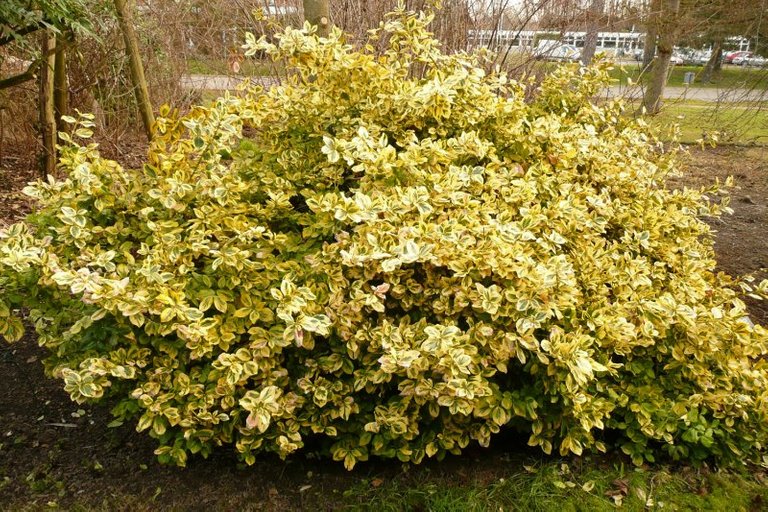
Introduction-The genus Euonymus is comprised of 175 species of shrubs, trees, and climbers grown for their attractive foliage, interesting fruit, and good autumn color. Most are native to Asia. Euonymus have a variety of uses in the garden, including as part of a shrub border or as specimens, hedges, or groundcovers.
Noteworthy Characteristics-Nice autumn color and ornamental fruit. All parts cause mild stomach discomfort if eaten.
Care-Tolerates most any well-drained soil in full sun or light shade. Evergreens need a sheltered site, while variegated plants show best in sun.
Propagation-As soon as seeds ripen, sow them in containers in a cold frame. Deciduous species can be started from greenwood cuttings in summer. Propagate evergreen species in summer from semi-ripe cuttings.
Problems-Witches' broom, stem dieback, powdery mildew, and fungal spots. Some pests and diseases can cause problems both in the garden and indoors, including mites, scale insects, leaf miners, aphids, and mealybugs.I nformation collected from wiki and other source.
The genus Euonymus is comprised of 175 species of shrubs, trees, and climbers grown for their attractive foliage, interesting fruit, and good autumn color. Most are native to Asia. Euonymus have a variety of uses in the garden, including as part of a shrub border or as specimens, hedges, or ground covers.
Nice autumn color and ornamental fruit. All parts cause mild stomach discomfort if eaten.Tolerates most any well-drained soil in full sun or light shade. Evergreens need a sheltered site, while variegated plants show best in sun.
As soon as seeds ripen, sow them in containers in a cold frame. Deciduous species can be started from greenwood cuttings in summer. Propagate evergreen species in summer from semi-ripe cuttings.
Witches' broom, stem dieback, powdery mildew, and fungal spots. Some pests and diseases can cause problems both in the garden and indoors, including mites, scale insects, leaf miners, aphids, and mealybugs.
The genus “Euonymus” includes 175 different euonymus plants, from dwarf shrubs to tall trees and vines. They are known as “spindle trees,” but each species also has its own common name.If you are looking for bushes, trees or climbers, euonymus has them all. Gardeners choose euonymus plant varieties for their attractive foliage and stunning autumn color. Some also offer unique fruits and seed pods. Many euonymus shrubs come from Asia. You’ll find that they are available in a wide range of colors and sizes, and include both evergreen and deciduous types of euonymus. That gives you a good selection of different euonymus plants to choose from when you are looking for border plants, hedges, screens, ground cover or specimen plants.
One poplar euonymus shrub for USDA hardiness zones 4 through 8 is called ‘burning bush’ (Euonymus alatus ‘Fire Ball’). It grows to about 3 feet (.9 m.) high and wide, but accepts trimming, shaping and shearing. In the autumn, the long green leaves turn brilliant red. Another versatile member of the euonymus shrub family is called ‘green boxwood.’ Its dark green leaves are glossy and stay on the plant all year long. Easy maintenance, green boxwood accepts trimming and shaping.
For different euonymus plants that are good for ground cover, consider winter-creeper euonymus (Euonymus fortunei). It might be the right shrub for you for you. Evergreen and only 6 inches (15 cm.) high, it can climb to 70 feet (21 m.) with the appropriate structure. It offers dark green leaves and greenish white flowers.
Source :
https://www.gardeningknowhow.com/ornamental/shrubs/euonymus/euonymus-plant-varieties.htm
Another beautiful plant and necessary information about euonymus.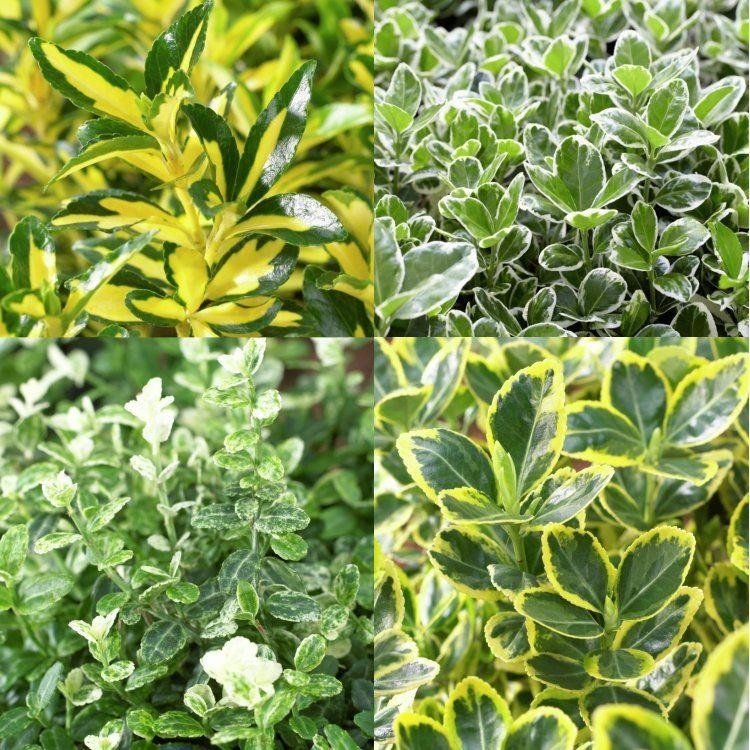
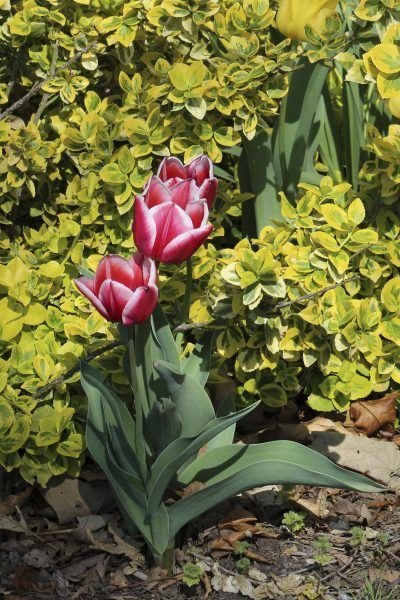


Euonymus is an assortment of blossoming plants in the staff vine family, Celastraceae. Ordinary names change by and large among different species and between different English-talking countries, yet fuse pivot (or shaft tree), devouring growth, strawberry-support, wahoo, wintercreeper, or basically euonymus. It includes around 130 species of deciduous and evergreen shrubs, little trees and lianas. They are by and large nearby to East Asia, connecting with the Himalayas,and they are also scattered in Europe, Australasia, North America, and Madagascar. 50 species are endemic to China.
Description:The unnoticeable blooms occur in little social affairs, and can be green, yellow, pink or maroon in shading depending upon species. The leaves are converse (occasionally exchange) and direct ovoid, normally 2– 15 cm long, and as a general rule with a finely serrated edge. The normal item is a pink or white four-or five-valved case like berry, which parts open to reveal the substantial secured orange or red seeds.
The seeds are eaten by frugivorous flying animals, which process the husky seed coat and disperse the seeds in their droppings. Various species are used for restorative use, and parts of the plants can be poisonous to individuals.
Scientific classification...
Kingdom: Plantae
(unranked): Angiosperms
(unranked): Eudicots
(unranked): Rosids
Order: Celastrale
Family: Celastraceae
Subfamily: Celastroideae
Genus: Euonymus L.
The genus “Euonymus” includes 175 different euonymus plants, from dwarf shrubs to tall trees and vines. They are known as “spindle trees,” but each species also has its own common name. If you are selecting Euonymus plant varieties for your landscape, read on. You’ll find descriptions of different Euonymus shrubs that you might want to invite into your garden.If you are looking for bushes, trees or climbers, euonymus has them all. Gardeners choose euonymus plant varieties for their attractive foliage and stunning autumn color. Some also offer unique fruits and seed pods. Many euonymus shrubs come from Asia. You’ll find that they are available in a wide range of colors and sizes, and include both evergreen and deciduous types of euonymus. That gives you a good selection of different euonymus plants to choose from when you are looking for border plants, hedges, screens, ground cover or specimen plants.
Good afternoon @ctrl-alt-nwo :)
Source
Ultimately the beauty of any garden or place is with the colorful plants including roses and other variety of plants that can enhance the value of the garden to the eyes of observer.
Source
I am so pleased that are really keen to have a deep look and knowledge of the every single specie of the garden, as my Grandpa used to have. the way you are contributing to the platform by awarding the people is highly appreciable.
Source
My best wishes and support is always with you the wonderful soul @ctrl-alt-nwo <3
Hello Sir @ctrl-alt-nwo i hope my comment will found you in good health :)
Euonymus is a genus of flowering plants in the staff vine family, Celastraceae. A family of which consists of over 130 species including both deciduous and evergreen shrubs and small trees. For those unfamiliar with Euonymus hedging plants, you may recognise its English name, Spindle. Its secondary name originated from its historical use as the wood from some species was traditionally used for the making of spindles for spinning wool. Over time, their cultivation has seen this species appear frequently across the UK for the countless benefits they provide for our gardens and their unique appearance makes them popular in garden designs and throughout the show garden community. Their popularity stems from their ornamental foliage and their ability to establish a formal, structured look as they are utilised for garden borders to showcase pathways, create focal points and to highlight other garden features such as larger hedges or sculptures. When left to grow, their bushy habit allows them to create an informal look which therefore gives you the opportunity to create a more relaxed atmosphere than those trimmed to shape. Here at Hedges Direct, we have a fantastic selection of the best Euonymus hedging plants for you. Access the brightly coloured, variegated foliage that offer unique shades and patterns of green, whites, yellows and pinks. As our Euonymus plants are evergreen, their fantastic foliage is present year round so you have constant cover and exciting interest year round.
Source
Source
This very beautiful garden and beautiful photography
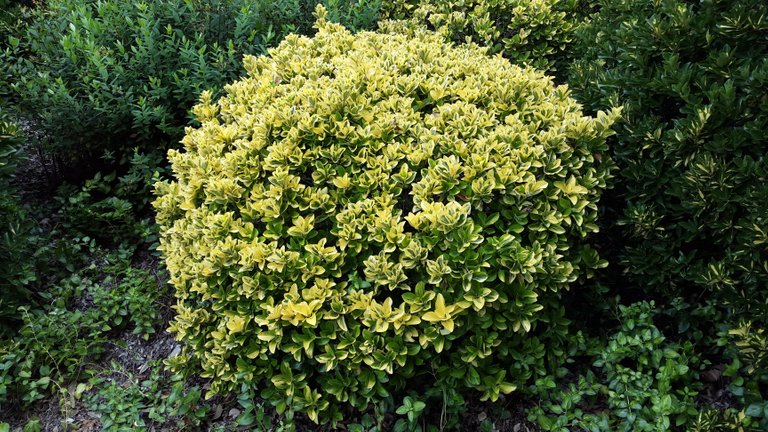
Have a great day.
thanks @ctrl-alt-nwo
Appropriate Euonymus Companion Plants: Tips On What To Plant With Euonymus
Euonymus plant species arrive in a scope of shapes and sorts. They incorporate evergreen bushes, for example, evergreen (Euonymus japonicus), deciduous bushes like winged (Euonymus alatus), and evergreen vines like wintercreeper (Euonymus fortunei). Whichever you have planted in your yard, you'll have to discover euonymus friend plants that supplement them. Read on for a few hints on what to plant with euonymus. Euonymus Plant Companions Plants that function admirably with euonymus are named euonymus friend plants. They may look decent beside euonymus as a result of differentiating shape, surface or shading.
The initial step is to assess the euonymus plants developing in your garden. It is safe to say that they are vines or bushes? Do they lose their leaves in winter or would they say they are evergreen? What shading is the foliage? What do the blossoms resemble? When you distinguish the attributes of the plants you as of now have, you are prepared to start a look for euonymus plant colleagues. Whatever euonymus species flourish in your yard are clearly a solid match for your atmosphere. You'll have to discover euonymus sidekick plants that additionally develop well in your general vicinity. The U.S. Division of Agriculture has made making sense of this somewhat less demanding by building up a strength zone framework. It partitions the nation into zones in view of atmosphere and winter temperatures. Discover what zone you live in and just consider euonymus plant colleagues that are proper for that zone.

Plants that Work Well with Euonymus Pick plants that diverge from your euonymus bushes or vines. For example, if your plants are fundamentally green with no berries, blooms or decorations, consider partner plants that offer somewhat streak. Brilliant blooms are one method for accomplishing this difference. Architects prescribe underplanting evergreen bushes with blooming globules to light up the garden in spring and summer. Another thought is to plant diverse sorts of euonymus together to make that differentiation. Think about Emerald 'n' Gold euonymus. These exquisite bushes have variegated leaves with a trace of pink hue amid the cool season. Keep in mind that green foliage isn't all a similar shading. Basically utilizing bushes in varying shades of green may give adequate differentiation. You can likewise plant bushes with differentiating shapes. Blend sections with mounding structures and pyramids with cover shapes. Basically, plants that function admirably with euonymus in your yard are those that are distinctive somehow from your bushes or vines. The complexity tallies.
Introduction:Euonymus/juːˈɒnɪməs/is an assortment of blossoming plants in the staff vine family, Celastraceae. Ordinary names change by and large among different species and between different English-talking countries, yet fuse pivot (or shaft tree), devouring growth, strawberry-support, wahoo, wintercreeper, or basically euonymus. It includes around 130 species[2][3] of deciduous and evergreen shrubs, little trees and lianas. They are by and large nearby to East Asia, connecting with the Himalayas,[4] and they are also scattered in Europe, Australasia, North America, and Madagascar. 50 species are endemic to China.
Description:The unnoticeable blooms occur in little social affairs, and can be green, yellow, pink or maroon in shading depending upon species.[4] The leaves are converse (occasionally exchange) and direct ovoid, normally 2– 15 cm long, and as a general rule with a finely serrated edge. The normal item is a pink or white four-or five-valved case like berry, which parts open to reveal the substantial secured orange or red seeds.
The seeds are eaten by frugivorous flying animals, which process the husky seed coat and disperse the seeds in their droppings. Various species are used for restorative use, and parts of the plants can be poisonous to individuals.
Thank you for amazing info..
Picture
EUONYMUS
Considering its size and diameter, this flower is very tiny but very flashy and grows up to 5 m. Although it is seen as a bush plant, there is also a species of fruit, such as ivy and tree. Thick and very bright leaves can grow up to 8 cm. The greatest feature of the flower is to stay alive for 12 months and to protect its luster in winter. The plant that blooms in summer also has small fruit like capsules.
Picture
This plant, which loves more warm climate, should therefore not be grown in very cold areas. This may cause the flower to dry out. No matter how much water is exposed to the fearless flower on the water, it does not show signs of decay. Pruning is also very satisfactory in the level of pruning does not need to prune.
1.The sixteenth plant is among the plants that do not need excessive care.

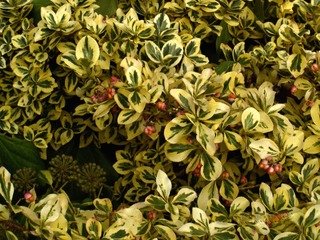
2.Drinking should be done regularly against the crustacea.
3.It will be faster to grow a hot field.
Watering should be done to keep the soil moist.
4.Pruning should not be done during this period as the warmest month is loved.
5.Pruning at regular intervals will yield much more efficiency.
Picture
From The Eastern Black Sea this plant is spreading to the world, and this plant has reached to Europe and the Balkans for time. It is also known that the plant is grown in Iran. 120 varieties known to be found in such different varieties of the plant is possible with the fruity. The average life expectancy of the plant, also known as Karayemiş, reaches up to 50 years. Then the growth of the plant will slow down and the extremities of the branches will be visible to the institutions. The plant's resistance to colds still makes it possible for the leaves to turn orange in the winter and to be poured in the most difficult winter conditions. Having an extremely oily body, the tree's bark is thick and handy enough to be peeled off. In ancient times small waterways were built using the shells of the tree.
Picture
An excellent choice for a colorful hedge, this evergreen shrub displays dense, bold green and gold variegated foliage on an upright growth habit. This tough shrub is adaptable to adverse conditions and tolerates poor, lean soils. Versatile and easy to care for, it requires minimal attention once established, but takes well to regular pruning.
src
Src
Src
src
companion plants that complement them.Read on for some tips on what to plant with euonymus;

Euonymus Plant Companions Plants that work well with euonymus are termed euonymus companion plants. They may look nice next to euonymus because of contrasting shape, texture or color. The first step is to evaluate the euonymus plants growing in your garden. Are they vines or shrubs? Do they lose their leaves in winter or are they evergreen? What color is the foliage? What do the flowers look like? Once you identify the characteristics of the plants you already have, you are ready to begin a search for euonymus plant companions. Whatever euonymus species thrive in your yard are obviously a good fit for your climate. You’ll need to find euonymus companion plants that also grow well in your area.
The U.S. Department of Agriculture has made figuring this out a little easier by developing a hardiness zone system. It divides the country into zones based on climate and winter temperatures.
Find out what zone you live in and only consider euonymus plant companions that are appropriate for that zone. Plants that Work Well with Euonymus Pick plants that contrast with your euonymus shrubs or vines. For instance, if your plants are basically green without any berries, flowers or frills, consider companion plants that offer a little flash. Bright flowers are one way of achieving this contrast. Designers recommend underplanting evergreen shrubs with flowering bulbs to brighten up the garden in spring and summer. Another idea is to plant different types of euonymus together to create that contrast. Consider Emerald ‘n’ Gold euonymus. These lovely shrubs have variegated leaves with a hint of pink coloration during the cold season. Don’t forget that green foliage is not all the same color. Simply using shrubs in differing shades of green may provide sufficient contrast. You can also plant shrubs with contrasting shapes. Mix columns with mounding forms and pyramids with carpet forms. Essentially, plants that work well with euonymus in your yard are those that are different in some way from your shrubs or vines. It’s the contrast that counts.
#source
Here are a few special types of euonymus to consider for your garden:

One poplar euonymus shrub for USDA hardiness zones 4 through 8 is called ‘burning bush’ (Euonymus alatus ‘Fire Ball’). It grows to about 3 feet (.9 m.) high and wide, but accepts trimming, shaping and shearing. In the autumn, the long green leaves turn brilliant red.
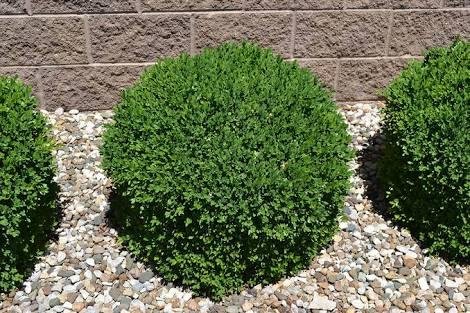
Another versatile member of the euonymus shrub family is called ‘green boxwood.’ Its dark green leaves are glossy and stay on the plant all year long. Easy maintenance, green boxwood accepts trimming and shaping.

Also take a look at euonymus ‘Gold Splash’ (Gold Splash® Euonymus fortunei ‘Roemertwo’). It is hardy to zone 5 and offers large, rounded green leaves edges with thick gold bands. This showy plant is a stand-out and very easy to please in terms of soil and pruning
https://www.gardeningknowhow.com/ornamental/shrubs/euonymus/euonymus-plant-varieties.htm
Euonymus shrubs are really easy to grow and adapt faster following these tips.
Burning Bush Euonymus is great fall color everywhere, but not if you plant it in the shade … it stays green. Euonymus shrubs all do best in full sun. They will adapt to most soils easily. Preparing your planting spot for fast root growth is what you want to do.
Loose soil promotes rapid root growth and faster drought tolerance.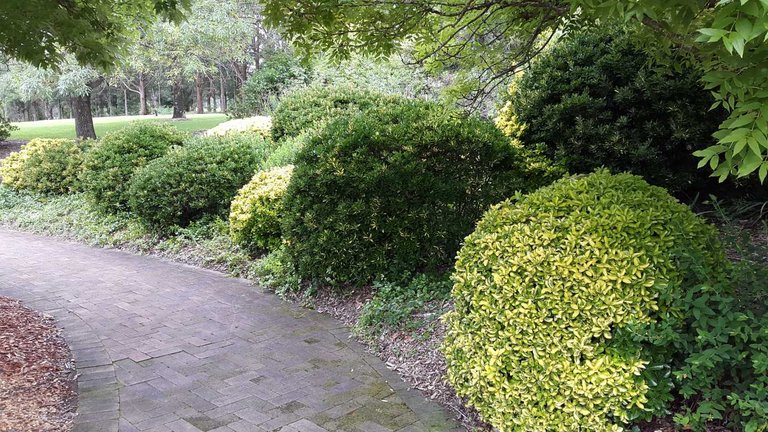
Dig the holes for your Burning Bush Euonymus bushes twice as wide and deep as the roots. Use your shovel to shred the ground soil well. Be sure to completely soak the root ball before covering it with soil. To keep the soil loose the first year and really get fast action, mix compost or humus into the soil when planting.
Give your Dwarf Variegated Euonymus a booster shot to stop transplant shock.
A dose of MiracleGro at planting time really works wonders at perking up a newly installed landscape brush. Repeating the instant feeding every month until fall will make a huge difference in how fast your Euonymus grows. You’ll also want to water it regularly so it’s not struggling to survive. You want to direct all the effort into creating vigorous roots.
Pruning lightly is best with most of these landscaping shrubs.
Greenspire Euonymus won’t require shearing at all for a nice soft shape. If you want more geometric and formal flair, all Euonymus are shearable. But shearing is work that you don’t have to do with these great landscape plants.
These tips will help you make Euonymus bushes a low maintenance plant in your yard.
If you prefer the once a year fertilizer method, by all means switch over to slow release plant food after the instant booster of MiracleGro. It’s that instant availability that really makes a difference in adapting fast to your soil and climate.
@source all
That's pretty outstanding information giving about Euonymus plant. An excellent choice for a colorful hedge, this evergreen shrub displays dense, bold green and gold variegated foliage on an upright growth habit. This tough shrub is adaptable to adverse conditions and tolerates poor, lean soils. Versatile and easy to care for, it requires minimal attention once established, but takes well to regular pruning.@ctrl-alt-nwo,
The genus Euonymus is comprised of 175 species of shrubs, trees, and climbers grown for their attractive foliage, interesting fruit, and good autumn color. Most are native to Asia. Euonymus have a variety of uses in the garden, including as part of a shrub border or as specimens, hedges, or groundcovers.
Nice autumn color and ornamental fruit. All parts cause mild stomach discomfort if eaten.
Tolerates most any well-drained soil in full sun or light shade. Evergreens need a sheltered site, while variegated plants show best in sun.
As soon as seeds ripen, sow them in containers in a cold frame. Deciduous species can be started from greenwood cuttings in summer. Propagate evergreen species in summer from semi-ripe cuttings.
Witches' broom, stem dieback, powdery mildew, and fungal spots. Some pests and diseases can cause problems both in the garden and indoors, including mites, scale insects, leaf miners, aphids, and mealybugs.
I founded images from google and details source of http://www.finegardening.com/genus/euonymus.
Here is my short comment :) I like this tree! Thanks for photos and information. I don't want to copy and paste something from google just want to share some photos I found and liked it;
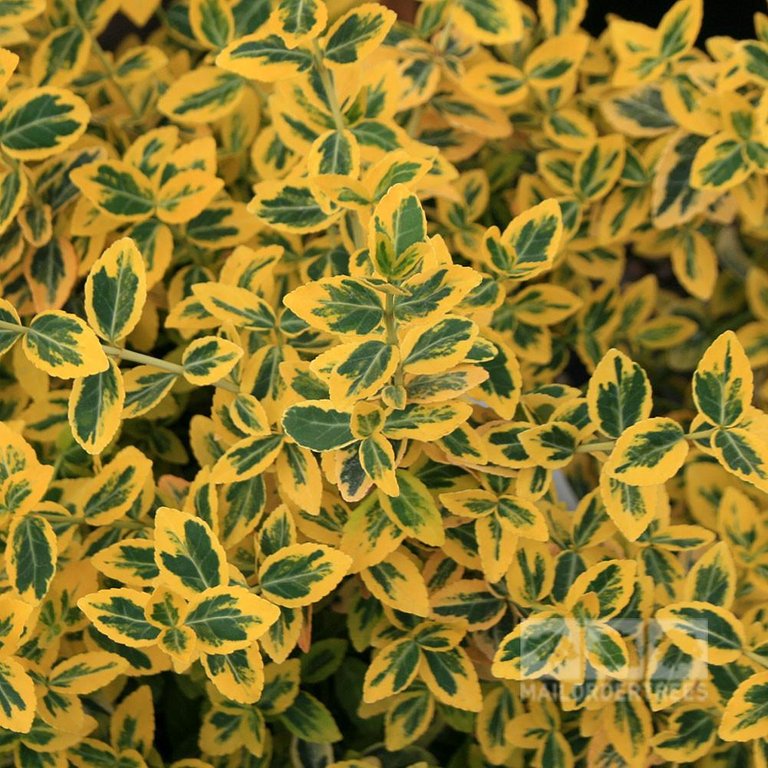
source: google images
Euonymus Shrubs are easy to grow and priovide colour all year long, the Burnung Bush, Euonymus alatus is spectacular during Autumn
We offer different types of Euonymus: the Euonymus alatus which originates from Japan and the Euonymus fortuneii varieties are from Korea.
The Euonymus alatus is also known as Cardinals Hat due to the shape of the seedpod in bright orange red. In autumn the foliage of the Euonymus alatus turns purple first and than becomes bright red this is quite a spectacle to see. Hence its change in colour; the shrubs is also known as Burning Bush. The Euonymus fortuneii varieties are dwarf in growth, evergreen and variegated, very versatile for the border, up against a wall, trimmed to be a ground cover or as a freestanding shrub.
This remarkable and slow-growing shrub from China and Japan is relatively inconspicuous in summer, but suddenly becomes a highlight in autumn when the foliage catches fire with brilliant crimson tints. These are most vivid in full sun, although it grows reasonably well in shade. The summer flowers are insignificant, but they are followed by attractive purple and red fruits which split open to form four winged lobes with a bright orange seed at the centre. 'Compactus' is a smaller and denser variety, and will make a fine informal hedge.
Source Google and https://erica-enterprises.com/euonymus
As you said 200 words? I will keep that in mind :)
Introduction
The genus Euonymus is comprised of 175 species of shrubs, trees, and climbers grown for their attractive foliage, interesting fruit, and good autumn color. Most are native to Asia. Euonymus have a variety of uses in the garden, including as part of a shrub border or as specimens, hedges, or groundcovers.
About Euonymus Shrubs
If you are looking for bushes, trees or climbers, euonymus has them all. Gardeners choose euonymus plant varieties for their attractive foliage and stunning autumn color. Some also offer unique fruits and seed pods. Many euonymus shrubs come from Asia. You’ll find that they are available in a wide range of colors and sizes, and include both evergreen and deciduous types of euonymus. That gives you a good selection of different euonymus plants to choose from when you are looking for border plants, hedges, screens, ground cover or specimen plants.
Here are some images
Disclaimers: All the images and text are taken from Google and is only for informational purpose :)
Euonymus is known by many names, according to the locals, as las vegas, black eaters, karamas and laz cherries. Particularly in the black sea region, a popular plant fruit is very popular, but those who are not accustomed to the taste have a strange taste that does not like the fruit of the fresh plant.
Properties of Euonymus Plant
Approximately 5-6 meters in length, they do not spoil the leaves of winter and open white flowers in April-May in the form of upright clusters. Leaves 4-6 cm wide and 10-15 cm long. Laz cherries did not say wasted fruit juice was like this name because they resemble cherries. When mature, the color becomes purplish and black, just like mature cherry.
Taste is not as tasty as cherry, but the black sea loves the fruit of the plant because the people are accustomed. Most of our country grows in the wilderness as it grows in ornamental plants and gardens as well.
Mainland Turkey, is said to be the Caucasus and Eastern Europe. We said that it was grown as an ornamental plant as it grows wild in the Black Sea region. Fruits are consumed by drying and consumed by drying in the ground-frying oven.
Benefits of Euonymus Plant
It is used as liquid soothing, cough cutter, abdominal pain, spasm and nausea remover distilled from fresh leaves of Euonymus. For this, daily doses of 1 to 8 grams are drunk three times in the morning, at noon and evening, and overdosing can lead to abdominal pain and vomiting poisoning. Plant water also enters into certain drug formations as a flavor and fragrance.
Fresh fruits of the plant have urine boosting and stone reducing effects. Drops of dried berries in the pulverized seeds are taken in the morning and 1-2 cups of coffee are taken.
All of photos from pixabay..
Every single plant is a plant that can be used to create a green texture even under conditions that the green plant can not tolerate.



Each dem green species is leafy, while green species in the summer are grown because of the beautiful foliage colors and red fruits.
The plant landscape, which is extremely suitable for pruning and shaping, gives a tropical image.
Formal gardens are also suitable for use in topiary. It is also a very good fence plant. It can be used as an element that gathers the eye in a landscape by pruning in different shapes.
When used in groups, it imparts a very heavy greenness, the size can be adjusted by pruning, so it can function like a low-floor groundbreaking shrub, and as a higher shrub group it can also function as a green building element to distinguish between different uses in one area.
Leaves can be used to plant plants that have colored leaves or showy flowers due to heavy planting and hanging to the bottom of the plant.
It is also suitable for growing on concrete floors such as roofs, balconies, terraces where there is no natural drainage.
Temperature: Every dem green species is damaged in the cold. It grows in temperate and warm climates.
Light: The sun develops very well in abundant areas, but semi-shadow situations can also occur. Even where the air temperature falls below zero, it is not damaged.
Water: It is a plant that will remove any kind of irrigation. Green image protection can be achieved with a normal irrigation.
Pruning: Pruning is rarely needed. When used as a coin, it needs pruning.
Soil: Soil is not as selective as will. It can be grown in any kind of soil, including in calcareous soil. But they prefer fertile, humus clay soils.
Production: Reproductions are seed and steel. Every dem green species is produced with steel while seed is produced with production.
picture source
Oh yeah, it's a beautiful plant! A common shrub of which there are many varieties and both evergreen and deciduous. Most of the evergreen varieties are grown for their colourful, strongly coloured foliage and these are the fortunei cultivars.
For ease of reference, although this is a selection of evergreen shrubs and most Euonymus are evergreen, it is worth mentioning here that there is a commonly grown, deciduous variety illustrated top centre, Euonymus 'Red Cascade' which has strong autumn colour and berries.
Euonymus is a versatile, easy to grow evergreen shrub, with some of the best variegated foliage of any garden shrub. They are often overlooked as a simple commonplace shrub, but to do so would under estimate their garden value as a maintenance free garden shrub with lovely variegated foliage. Thank you @ctrl-alt-nwo
https://www.sundaygardener.co.uk/euonymus.html
This is a very nice looking plant.I wish i had that in front of my house.Lets see what i can get for you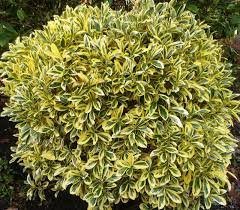
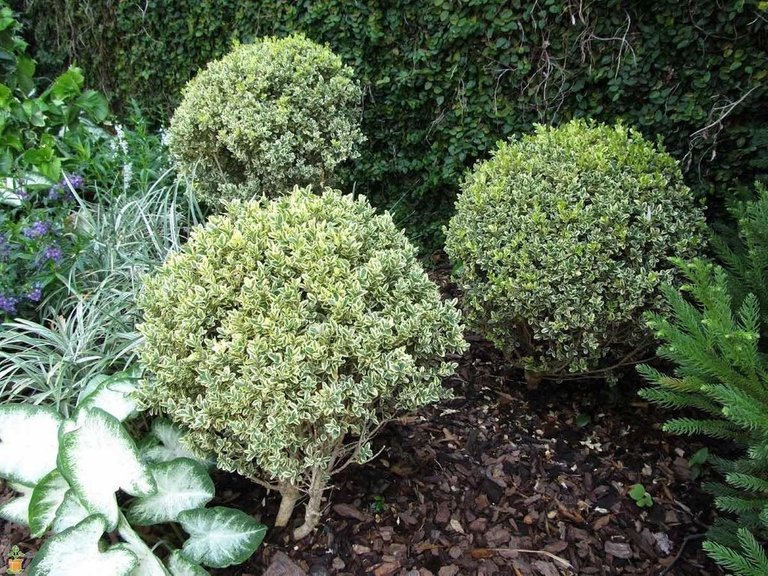
Botanical Name:Euonymus europaeus
Family:Celastraceae (spindle tree) family
Also known as:European spindle tree, common spindle
Where is it originally from?:Europe
Description:The inconspicuous flowers occur in small groups, and can be green, yellow, pink or maroon in color depending on species.[4] The leaves are opposite (rarely alternate) and simple ovoid, typically 2–15 cm long, and usually with a finely serrated margin. The fruit is a pink or white four- or five-valved pod-like berry, which splits open to reveal the fleshy-coated orange or red seeds.The seeds are eaten by frugivorous birds, which digest the fleshy seed coat and disperse the seeds in their droppings. Many species are used for medicinal use, and parts of the plants can be poisonous to humans.
Cultivation and uses:The wood of some species was traditionally used for the making of spindles for spinning wool;[6] this use is the origin of the British English name of the shrubs.Euonymus are popular garden shrubs, grown for their foliage, the deciduous species often exhibiting very bright red autumnal colours, and also for the decorative berries.
What damage does it do?:Forms dense thickets in the open and in the shade, blocking light and space for native understorey plants and seedlings.
That's all from me all the information collected from wiki and various sources.
Description:The inconspicuous flowers occur in small groups, and can be green, yellow, pink or maroon in color depending on species.[4] The leaves are opposite (rarely alternate) and simple ovoid, typically 2–15 cm long, and usually with a finely serrated margin. The fruit is a pink or white four- or five-valved pod-like berry, which splits open to reveal the fleshy-coated orange or red seeds.
Cultivation and uses*The wood of some species was traditionally used for the making of spindles for spinning wool;[6] this use is the origin of the British English name of the shrubs.
Euonymus are popular garden shrubs, grown for their foliage, the deciduous species often exhibiting very bright red autumnal colours, and also for the decorative berries.Such a beautiful tree.It's a treat to watch kinds of tree.I am trying to find something for you @ctrl-alt-nwo sir.I always wait for your post.
The seeds are eaten by frugivorous birds, which digest the fleshy seed coat and disperse the seeds in their droppings. Many species are used for medicinal use, and parts of the plants can be poisonous to humans.
Euonymus Hedge PlantsAnother great plant share us after a long time @ctrl-alt-nwo
Euonymus is a genus of flowering plants in the staff vine family, Celastraceae. A family of which consists of over 130 species including both deciduous and evergreen shrubs and small trees. For those unfamiliar with Euonymus hedging plants, you may recognise its English name, Spindle. Its secondary name originated from its historical use as the wood from some species was traditionally used for the making of spindles for spinning wool. Over time, their cultivation has seen this species appear frequently across the UK for the countless benefits they provide for our gardens and their unique appearance makes them popular in garden designs and throughout the show garden community. Their popularity stems from their ornamental foliage and their ability to establish a formal, structured look as they are utilised for garden borders to showcase pathways, create focal points and to highlight other garden features such as larger hedges or sculptures. When left to grow, their bushy habit allows them to create an informal look which therefore gives you the opportunity to create a more relaxed atmosphere than those trimmed to shape. Here at Hedges Direct, we have a fantastic selection of the best Euonymus hedging plants for you. Access the brightly coloured, variegated foliage that offer unique shades and patterns of green, whites, yellows and pinks. As our Euonymus plants are evergreen, their fantastic foliage is present year.
Most Popular Euonymus Hedging Plants
Euonymus fortune Emerald n Gold makes your garden look fit for the Queen with its bright green leaves edged in gold; the perfect garden jewel. Its colourful interest doesn’t stop there as it welcomes winter as the foliage transforms into soft shades of pink and red. For similar looking foliage, Euonymus japonicas ‘Ovatus Aureus’ plants offer variegated leaves, this time displaying dark green leaves with bright yellow outlines. In addition to its delightful foliage, summer green flowers appear in spring, occasionally followed by pink fruits. For alternative foliage colour, consider the white tinted patterns of Euonymus fortunei ‘Emerald Gaiety' and Euonymus japonicus ‘Kathy’. Both species exhibit polished, dark green leaves with a unique outline of white/silver. However, Euonymus fortune ‘Emerald Gaiety’ produces small, oval leaves and a more compact structure, compared to the large leaves of Euonymus japonicus ‘Kathy’ which creates a brilliant effect as they move simultaneously with a strong breeze. Euonymus japonicus ‘Jean Hugues’ displays lush, dark green, glossy foliage of a very compact nature. Hence why it is a popular alternative to Box (Buxus sempervirens) as it resembles the practicality of Box hedge plants, without the worry, Box blight – see more options in our Box alternatives and blight section.
Euonymus Pruning, Planting and Aftercare
Our Euonymus shrubs are fit for every garden as they will thrive in all types of growing conditions. These plants will thrive in moist-normal soils in shaded areas, but for their colour to fully flourish, they prefer positions exposed to full sun. For seaside gardeners, we know that you’re faced with extreme weather conditions but don’t worry, you can achieve all of your gardening goals, no matter your location when choosing Euonymus. These plants are a tough species which have an impressive success rate in all kinds of locations and coastal environments pose no threat to these hardy plants. With an average annual growth rate of 10-20cm, ideal for hedge heights of up to a metre, the variety of Euonymus hedging plants we supply are the perfect low maintenance, low growing shrubs. They simply require a quick prune in late spring in order for bushy growth to develop. They will thrive in exposed coastal and inland weather conditions, they favour no specific soil type and will grow in positions revealed to full sun and partially shaded areas.
Source in internet
This is an extremely decent looking plant.I wish I had that before my house.Lets see what I can get for you
Natural Name:Euonymus europaeus
Family:Celastraceae (shaft tree) family
Additionally known as:European shaft tree, basic axle
Where is it initially from?:Europe
Description:The subtle blossoms happen in little gatherings, and can be green, yellow, pink or maroon in shading relying upon species.[4] The leaves are inverse (once in a while exchange) and straightforward ovoid, commonly 2– 15 cm long, and for the most part with a finely serrated edge. The organic product is a pink or white four-or five-valved case like berry, which parts open to uncover the plump covered orange or red seeds.The seeds are eaten by frugivorous winged creatures

Euonymus is a sort of blossoming plants in the staff vine family, Celastraceae. A group of which comprises of more than 130 species including both deciduous and evergreen bushes and little trees. For those new to Euonymus supporting plants, you may perceive its English name, Spindle. Its optional name started from its verifiable use as the wood from a few animal varieties was customarily utilized for the making of axles for turning fleece. After some time, their development has seen this species show up much of the time over the UK for the innumerable advantages they accommodate our greenery enclosures and their remarkable appearance makes them mainstream in plant outlines and all through the show cultivate group. Their notoriety comes from their fancy foliage and their capacity to build up a formal, organized look as they are used for plant outskirts to grandstand pathways, make central indicates and feature other garden highlights, for example, bigger supports or figures. At the point when left to develop, their rugged propensity enables them to make a casual look which subsequently gives you the chance to make a more casual climate than those trimmed to shape. Here at Hedges Direct, we have a phenomenal determination of the best Euonymus supporting plants for you. Access the brilliantly hued, variegated foliage that offer extraordinary shades and examples of green, whites, yellows and pinks. As our Euonymus plants are evergreen, their phenomenal foliage is available year.
Most Popular Euonymus Hedging Plants
Euonymus fortune Emerald n Gold influences your garden to look fit for the Queen with its splendid green leaves edged in gold; the ideal garden gem. Its brilliant intrigue doesn't stop there as it invites winter as the foliage changes into delicate shades of pink and red. For comparative looking foliage, Euonymus japonicas 'Ovatus Aureus' plants offer variegated leaves, this time showing dim green leaves with brilliant yellow diagrams. Notwithstanding its delightful foliage, summer green blooms show up in spring, sometimes took after by pink natural products. For elective foliage shading, consider the white tinted examples of Euonymus fortunei 'Emerald Gaiety' and Euonymus japonicus 'Kathy'. The two species show cleaned, dull green leaves with a novel diagram of white/silver. Be that as it may, Euonymus fortune 'Emerald Gaiety' delivers little, oval leaves and a more minimal structure, contrasted with the substantial leaves of Euonymus japonicus 'Kathy' which makes a splendid impact as they move at the same time with a solid breeze. Euonymus japonicus 'Jean Hugues' showcases lavish, dull green, polished foliage of an exceptionally reduced nature. Thus why it is a well known contrasting option to Box (Buxus sempervirens) as it takes after the common sense of Box fence plants, without the stress, Box curse – see more choices in our Box choices and scourge segment.
Euonymus Pruning, Planting and Aftercare
Our Euonymus bushes are fit for each garden as they will flourish in a wide range of developing conditions. These plants will flourish in soggy typical soils in shaded zones, however for their shading to completely prosper, they lean toward positions presented to full sun. For ocean side plant specialists, we realize that you're looked with extraordinary climate conditions yet don't stress, you can accomplish the greater part of your cultivating objectives, regardless of your area while picking Euonymus. These plants are an extreme animal types which have an amazing achievement rate in a wide range of areas and seaside conditions represent no danger to these solid plants. With a normal yearly development rate of 10-20cm, perfect for fence statures of up to a meter, the assortment of Euonymus supporting plants we supply are the ideal low upkeep, low developing bushes. They essentially require a brisk prune in pre-summer all together for shaggy development to create.
Euonymus Fortunei
Amazing bush, but unfortunately recently it has undeservedly been forgotten by gardeners. But in vain. Many of its ornamental varieties are frost-hardy, unpretentious and well accustomed to the gardens of the south and the middle lane in Russia. I live in a small town, I think it will be difficult for me to find seedlings of this shrub, but if I find I will definitely advise everyone. This is also a finding for decorative gardens. Thank you for sharing.
A source : https://7dach.ru/Alensel/mnogolikiy-beresklet-vidy-posadka-uhod-primenenie-4881.html
I have some Spindles tree in my garden.... Those are small .. I regular serving those... Here those...
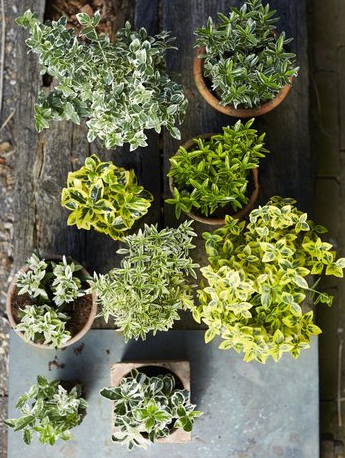
I collect some details about Spindles tress...Those are given here...
When i going to indian sufary ... I saw some burning bush ......and i capture them... here those....burning bush is really colorful tree
The family of Rosaceae is a plant that shoots up to 6 meters in length and does not plow its leaves in the winter months. The flowers are white, collectively clustered together, rarely blooming in the fall.
Homeland plants with Turkey's eastern Black Sea region and later spread to Europe and America.
Benefits:
WARNING: Fresh leaves are poisonous but dry leaves are used.
If you are looking for a new shrub for your landscape, you cannot go wrong with a euonymus shrub. This landscape favorite can be found in varieties that grow like a vine, to a shrub, to even a tree. They as a group provide year round interest from colorful foliage, interesting bark, and unique flowers and fruit. One well known euonymus is the “Burning Bush” that starts out in the spring as a green leafed shrub. As the temperatures cool, the foliage begins to turn red and in doing so this is where the name “Burning Bush” comes from. Later on in the season, red berries will form, which provide wildlife food.
The euonymus works well in partial sun to shade and even bright sunlight. They as a group can grow in USDA Plant Hardiness Zones 4 through 8. If you are afraid to plant anything new because of deer, do not worry. These shrubs are deer resistant. Beyond that, they work well in landscape design as living fences, and ground covers. The reason for this is the fact that many varieties of the euonymus can grow up to 24 inches a year under ideal conditions.
To plant your euonymus, starts off with the proper location. The euonymus shrub can tolerate shade to direct sunlight. While the soil type is not important for this shrub, the soil drainage is very important. It will not tolerate “wet feet,” which is where the roots sit in water. Prior to planting your shrub, make sure you at least observe the ground after a rain. If you notice water pooling on the soil surface then you can safely say that the soil is not well draining. Once you have determined this, you are ready to plant.


To begin the planting process, you will first need to dig a hole that is twice the width of the container and the same depth. After that is done, place the planted pot in the hole to check the depth and width of the hole. Adjust as needed.Once the hole has been dug, you will need to scrape the inside of the hole. Why do you need to do that? Well, the answer is simple. If you have a high level of clay in your soil make up then you have a situation by which the inside of the hole will become hard like a clay pot. This process is called glazing and this simple process will keep the roots of your plant from growing outward from the hole. The glazing itself will keep the roots in the hole by which they will just grow in a circle. This will eventually kill the plant. To prevent this, you will need to deglaze the hole. This is easily done by scraping the inside of the hole with a garden rake.Next, remove the euonymus from its container by cutting away the pot. After the roots have been exposed, examine the root ball and cut away any diseased or dead roots. Gently tease the roots with your finger to loosen them up a bit and tell them they can grow outward. Once that is done, place 2 inches of garden soil in the bottom of the hole and place the roots in the hole. Fill in with soil. Water in to remove any air bubbles and refill with soil as needed to make sure the hole’s soil level and the ground are equal.
Sprinkle a slow release fertilizer on top of the soil and top with mulch for weed control.
Source:
http://www.weekendgardener.net/garden-plants/how.to.grow.and.care.for.the.euonymus.htm